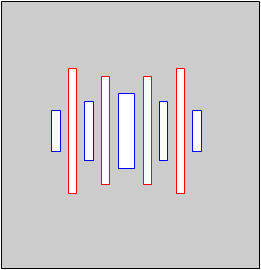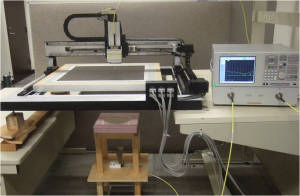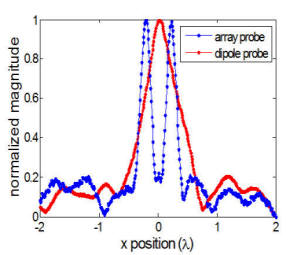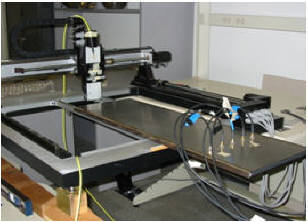
The objective of this research is to develop viable super-resolution imaging technologies at the microwave (microstructured) and optical (nanostructured) regimes. Typically this implies sub-wavelength resolution. A great challenge towards the achievement of this goal is the short "working distance" which is typically needed (fraction of a wavelength) between the imaging apparatus and the object to be imaged. If the "working distance" issue could be relaxed, the rewards would be very significant. For example, microwaves can penetrate well in inorganic and organic materials (including the human body). However, the achieved resolution is poor for many applications due to the relatively long wavelength at microwaves (several centimetres). It should be pointed out that there is a trade-off between increasing the resolution by using shorter wavelengths (e.g. millimetre or terahertz frequencies) and penetration depth. Therefore, a viable technology that can retain the advantage of the long-range penetration depths of microwaves, while offering sub-wavelength resolution, can lead to a paradigm shift in imaging technology.
On the other hand, at infra-red and optical frequencies, relaxing the working distance between the sample to be imaged and the imaging apparatus can have multiple benefits including (a) imaging of buried objects (b) imaging of sensitive biological specimens (due to the non-invasive nature offered by a longer working distance) and (c) simplification of apparatus such as near-field optical microscopes.
Another very important application of a viable sub-wavelength optical focusing technology is the extension of photolithography to the deep nanoscale regime. Currently the electronics industry is facing a great challenge in keeping up with Moore's law and this is to a large extent due to the limits of photolithography. Proposals to utilize UV light or electron-beam lithography are facing great technological and cost challenges. To this end, a viable nanoscale photolithography technology could provide a revolutionary solution to this very challenging problem.
To achieve these goals we are working on a combination of the following approaches (a) metamaterial-based imaging structures [1] (b) metascreens [2],[3] (c) super-oscillation structures [4].
[1] J. Zhu and G.V. Eleftheriades, "Experimental verification of overcoming the diffraction limit with a volumetric Veselago-Pendry transmission-line lens", Physical Review Letters, 101, 013902, July 04, 2008.
[2] L. Markley and G.V. Eleftheriades, "Two-dimensional subwavelength-focused imaging using a near-field probe at a quarter-wavelength working distance", Journal of Applied Physics, 107, 093102, May 04, 2010.
[3] L. Markley, A.M.H. Wong, Y. Wang and G.V. Eleftheriades, "Spatially shifted beam approach to sub-wavelength focusing", Physical Review Letters, 101, 113901, Sept. 12, 2008.
[4] A.M.H. Wong and G.V. Eleftheriades, "Sub-wavelength focusing at the multi-wavelength range using superoscillations: An experimental demonstration", IEEE Trans. on Antennas and Propagation , pp. 4766-4776, vol. 59, no. 12, Dec. 2011.




near-field with a Metascreen
Super-oscillation imaging and sensing with
a five wavelength working distance.

SUPER-RESOLUTION IMAGING